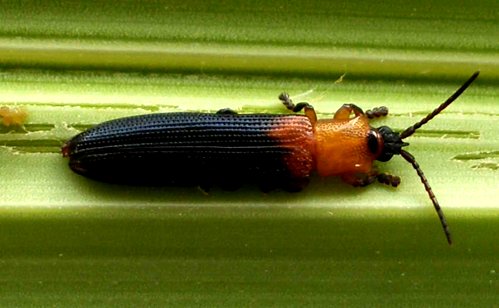The enemy creeps in silently, attacking unopened young fronds. As the spear unfurls, it moves on to its next victim. Brontispa longissima (Gestro) or coconut leaf beetle entered into the Philippines through the shipments of ornamentals. With the palms as its point of interest, the insect chews leaflets causing the young leaves to appear scorched as a result of damage.

In the Philippines, Brontispa feasted on the most ubiquitous palm, the coconut. From August 2007 to March 2011, Brontispa longissima, with its invasive and destructive infestation, has already affected more than three million coconut trees. Thus, the silent pest made a resonant impact to the coconut industry – a threat that cannot be allowed to intensify.
The coconut industry is one of the leading sectors of the Philippine agricultural economy. A total area of 3.26 million hectares (M ha) is devoted to coconut. Being the leading export agricultural commodity, it ranks as the second largest contributor to Gross Value Added (GVA) equivalent to 6%. As reported, 3.5 million farmers/farm workers are directly employed and 25 million Filipinos are being supported through diversified income source.
With the alarming situation, the Philippine Coconut Authority (PCA) spearheaded the Brontispa Action Program. The program seeks to determine the extent of infestation and level of damage of Brontispa in the country.
PCA initiated an aggressive and sustained information campaign; conducted emergency control activities using pesticides; and trained personnel and farmers on available control strategies. However, the application of pesticides provided only temporary relief since recurrence and re-infestation occur as soon as the effect wore off. Such observation, considering the economics and environmental impact, paved the way for the use of biological control as an alternative approach that can effectively and sustainably manage Brontispa population.
Building on earlier R&D outputs and field experiences, the research team of Ms. Cynthia Gallego of PCA-Davao Research Center proposed a project titled “Development of an Integrated Pest Management (IPM) against Brontispa longissima (Gestro), an invasive pest of coconut and other palm species”. This is in collaboration with PCA’s Albay Research Center (PCA-ARC) and the Philippine Nuclear Research Institute.
The project consists of six component studies, namely: Survey and mapping of Brontispa longissima (Gestro) occurrence, its hosts and indigenous natural enemies; Mass production of promising natural enemies of Brontispa longissima (Gestro); Crop loss assessment due to Brontispa longissima (Gestro) infestation; Field testing and integration of control strategies against Brontispa longissima (Gestro); Information campaign and IPM promotion in Brontispa-infested areas in the Philippines; and Effects of gamma irradiation on the sterility of Brontispa longissima (Gestro).
The three-year project is expected to develop and promote application of cost-effective, environmentally sound IPM strategies against Brontispa longissima that are technically feasible and socio-economically acceptable at the farm level.
Coconut farmers, decision makers, researchers, and local government units are expected to benefit from this project.
Incidentally, the project will be funded by the Department of Science and Technology (DOST) and will be coordinated and monitored by DOST-PCARRD.
